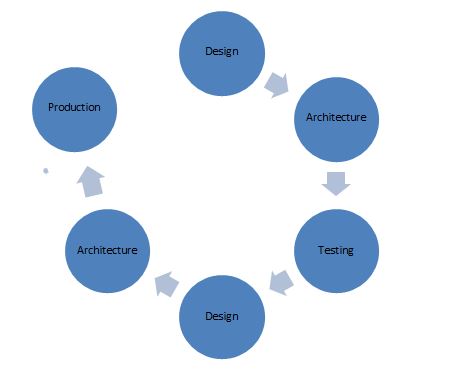System dynamics is a field of science that allows creating complex systems at high levels of abstraction with the assumption in a number of different small details that reflect the insignificant properties of products, people or their groups. Such models provide an overview of the system and are well suited for strategic planning. This paper considers an example of a dynamic application development system. The structure of the system has a decisive influence on its effectiveness in the long run.
The dynamics of complexity are dictated by various internal and external factors, which are explained by a causal relationship and a non-linear relationship between the elements of the system. For example, working in an IT company, I had a procedure for correcting certain types of errors. As a result, it could lead to confusion in the code, a change in focus, or writing style. When bugs were changed, programmers made time-consuming edits that would result in dynamic complexity in the system, requiring even more work to restore the original look. These events have the same structure, differ from the original idea, and significantly affect the system. According to Senge (2006), dynamic complexity is characterized by subtle cause and effect. Thus, in the system, the correction of a particular error has a distinct effect in a short run, however, in a long run, it may lead to more confusions.
A straightforward approach can have complex consequences in the future due to this kind of dynamic complexity. It is imperative to look for the source of the problem since there are always many main determinants of specific actions in the system’s operation. If the correction of the problem is easy, then it is likely that an erroneous determinant or an incorrect approach to the solution was chosen. Dynamic complexity, especially over a long distance, requires correcting the symptoms it caused, as well as changing the fundamental approach that led to these errors (Miker, n.d.). These issues can be deferred and left unaddressed until potential critical consequences for the central system.
Consequently, the determinants are interconnected, and the nature of this relationship determines the system’s structure. It, in turn, is the key to solving such complications by giving an idea of the related elements and sections of the system where the failure occurs. In this case, the system bug is fixed without further control from the designers and architects who developed the basic structure of the application and do not have the opportunity to interfere with the final changes of the testers, which leads to inconsistencies and confusion in the code. The behavior of a dynamic system is not properly controlled under the current structure, when improved it requires more resources, but eliminates fundamental errors. Thus, a more define structure impacts a system’s behavior making its more autonomous.
Feedback loops are a fundamental concept in system dynamics. The main descriptive mechanism for these loops is accumulators, which are entities that participate in the system and have a dynamic structure. By changing these accumulators, error parsing occurs, which in the particular case of this work requires additional verification of critical sections of the design and architecture development before running and deploying the code. On an ongoing basis, changes are not tracked by either the leading application designer or the engineer, which gives freedom to the tester, who may not be fully privy to the very structure of the application. As a result, an additional loop is required. This scheme before and recommended after is shown in a simplified form in Figures 1 and 2.


All in all, dynamic complexity in systems is characterized by multiple interconnected determinants and subtle causes and effects. In order to provide positive changes, it is necessary to address the whole system. As a result, sometimes it is necessary to resort not only to restructuring a single erroneous element, as in the case of programming testing in the replacement of a procedure but also to the entire structure, which would require, for example, additionally automated or manual verification.
References
Miker, S. (n.d.). Understand dynamic complexity. Web.
Senge, P. M. (2006). The fifth discipline: The art and practice of the learning organization. Doubleday.